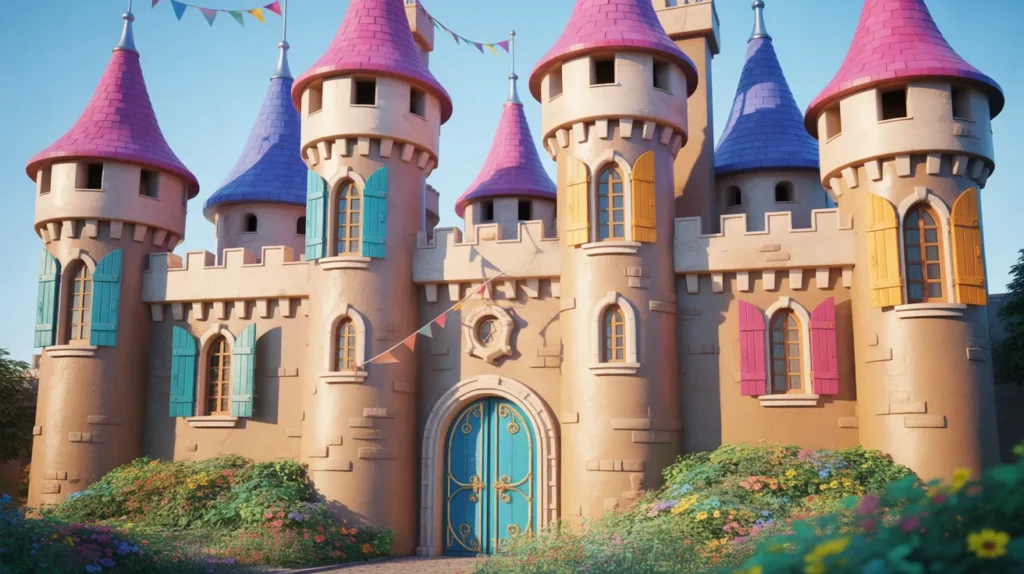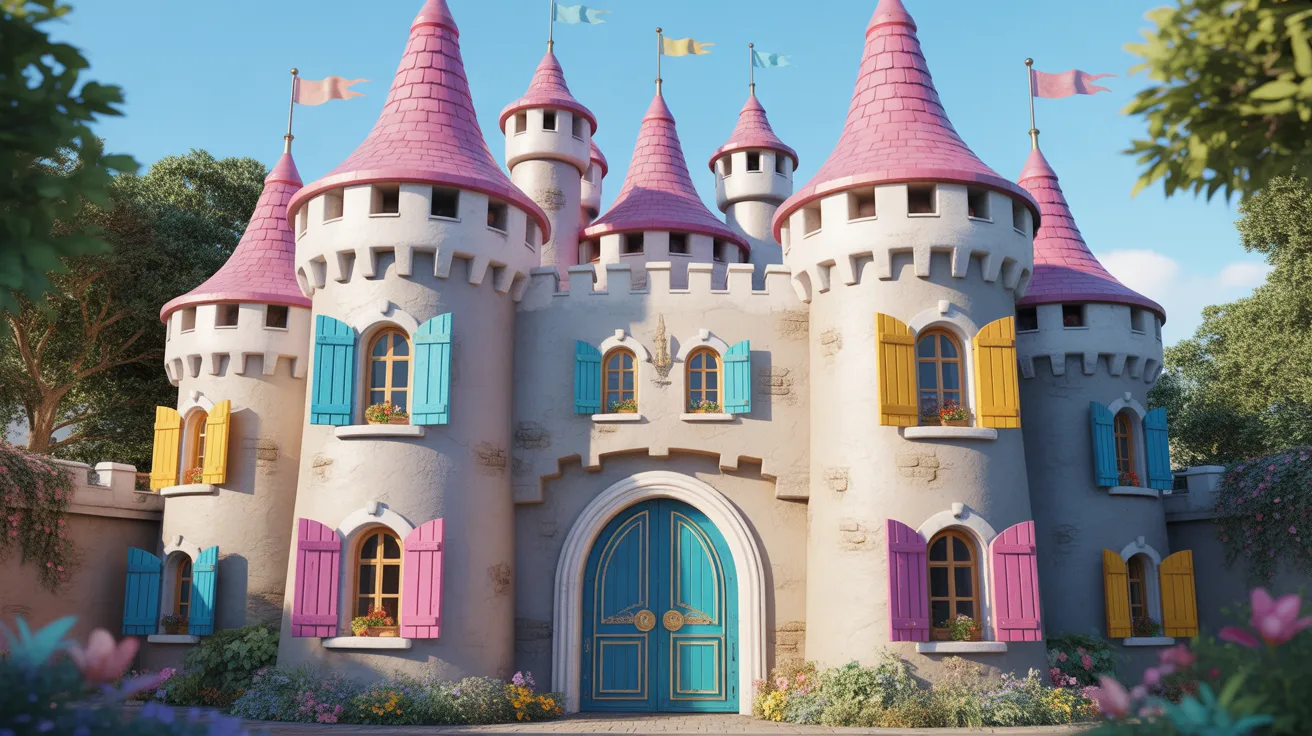Welcome to the Kingdom of Laughter 🏰
Imagine stepping through massive wooden gates into a world of stone towers, echoing halls, and centuries-old secrets. Castle Jokes and Puns have fascinated humanity for over a thousand years, serving as homes for royalty, strongholds against invaders, and symbols of power and prestige. Whether you’re exploring Edinburgh Castle in Scotland, Windsor Castle in England, or Neuschwanstein Castle in Germany, these architectural marvels inspire awe and wonder.
The first castles appeared around 1000 AD during the Middle Ages, evolving from simple defensive structures into elaborate palaces. Today, over 25,000 castles exist worldwide—some perfectly preserved, others magnificent ruins. Tourism at castles generates billions annually as visitors travel to experience medieval grandeur, royal history, and the romance of kingdoms past.
But castles aren’t just historical monuments—they’re comedy goldmines! The medieval setting, royal protocols, dungeon drama, and architectural peculiarities create endless opportunities for humor. From knight jokes to royal puns to drawbridge disasters, the castle provides rich material for wordplay.
So polish your armor, adjust your crown, and prepare for the most regal collection of castle jokes and puns this side of the moat! These medieval-themed quips are fortified with laughter and absolutely un-castle-table!
🏯 Classic Castle Puns: Stone-Cold Comedy
Architectural Comedy Foundations
Castles are structurally designed to be funny—literally! Drawbridges go up and down (elevator jokes practically write themselves). Moats create water pun opportunities. Turrets, keeps, and ramparts all have comedic potential. The medieval setting naturally lends itself to anachronistic humor.
Castle terminology provides wordplay gold. Dungeons, turrets, parapets, crenellations (those notches on castle walls), and barbicans (fortified outposts) sound inherently amusing when spoken aloud. Medieval jobs like “castellan” (castle keeper) and “squire” create pun possibilities.
The formality and protocol of castle life contrasts amusingly with modern reality. Knights following honor codes, strict hierarchies, and ceremonial traditions clash humorously with contemporary casual attitudes. This contrast has inspired comedy for centuries.
The “keep” (the central tower) is probably the most punnable castle feature. “Keeping” things, keeping secrets, “keep it real”—the double meanings practically leap from the walls!
Essential Castle Wordplay
- I visited a castle and realized I was in a fortress of solitude—very differently than Superman intended! Architectural isolation with added towers.
- Why did the medieval peasant love castles? Because they really knew how to make a strong hold on people’s attention! Structural grip on communities.
- My friend asked if I enjoyed castle tours, and I replied, “Absolutely—it’s not every day you get to tower above your problems!” Literally ascending above concerns.
- The castle guard told me, “This job really keeps me at the top of my game!” Vertical positioning meets professional achievement.
- Why don’t castles ever lose at poker? Because they’re always holding their cards close to the tower! Architectural card-holding metaphors.
- I asked the castle keeper about vacations and they said, “I can’t leave—someone needs to guard this keep!” Employment commitment expressed through architecture.
- The drawbridge announced, “I’m raising the stakes around here!” Literal elevation of structural elements.
- Why did the medieval architect become famous? Because they really knew how to make an impression—stone hard impressions! Durable legacy through masonry.
- The castle walls told me, “We’ve been keeping secrets for 500 years—stone silent about everything!” Structural silence through density.
- My GPS tried routing through the castle and I said, “That’s not a shortcut—it’s a fortification!” Navigation confusion through architecture.
- Why do castles make terrible secret keepers? Because everyone can see right through them—wait, no, they’re made of solid stone! Structural opacity ironically creates security.
- I asked the castle if it ever got lonely and it replied, “Never—I’m always surrounded by walls!” Isolation through architecture.
Related: 120+ KitKat Jokes & Puns: Have a Break, Have a Laugh!
👑 Royal Humor: Nobility and Noble Puns
The Court of Comedic Majesty
Medieval royalty creates endless humor through contradiction. Kings and queens demanded absolute respect while often being hilariously incompetent. Royal hierarchies, courtly manners, and elaborate protocols clash beautifully with human ridiculousness.
The concept of “divine right”—the belief that monarchs ruled by god’s will—creates dark comedy. The notion that someone inherently superior simply by birth challenges modern sensibilities. Yet historically, entire civilizations operated under this assumption!
Royal titles provide wordplay opportunities. Dukes, earls, barons, viscounts—these names sound amusing when spoken in modern contexts. A “count” who “counts” things. A “duke” who’s “ducking” responsibility. Medieval nomenclature writes its own jokes.
The relationship between rulers and subjects creates narrative comedy. Kings demanded loyalty despite frequently making terrible decisions. Yet people followed anyway, creating a system held together by tradition, fear, and the occasional good speech.
Nobility-Based Humor
- The king declared, “I’m not arrogant—I’m just royally confident!” Self-awareness through royal phrasing.
- Why did the queen bring a ladder to court? Because she wanted to raise the bar on expectations! Literal elevation of standards.
- The nobleman said, “My title is noble—literally, I’m a noble man!” Identity through nomenclature.
- I asked the peasant about the king and they replied, “He’s reign-ing over us with questionable judgment!” Weather puns mixed with monarchy criticism.
- Why did the prince study architecture? Because he wanted to understand his inheritance—literally the castle structure! Educational motivation through property.
- The duchess announced, “This party is absolutely royaling!” Modified verb form for royal excess.
- I told the earl he was funny and he said, “That’s because I have a title sense of humor!” Identity affecting comedy.
- Why do royals never win at chess? Because they insist on playing with themselves on the board—they think they’re that important! Ego-based gaming disasters.
- The baron asked why everyone bowed and I replied, “Because you’re literally beneath the nobility in status—wait, that’s backwards!” Hierarchical confusion.
- The king demanded respect and I asked, “Have you earned it or are you just throne-ful about your position?” Performance-based authority.
- Why did the countess love puns? Because she really appreciated good court-esy humor! Nobility-based wordplay.
- The princess said, “Being royalty is a crown-clusive experience!” Exclusivity expressed through monarchy.

🗡️ Medieval Knight Jokes: Armor-Plated Humor
The Chivalrous Comedy Corps
Medieval knights were simultaneously noble warriors and flawed humans—perfect comedy material. The concept of chivalry (protecting the weak, honoring ladies, maintaining courage) contrasts amusingly with historical reality (knights frequently participated in pillaging, betrayal, and various moral compromises).
Knight armor creates built-in humor. The heavy protective suits limited mobility, created heating problems, and generally made knights look ridiculous by modern standards. Imagine trying to use a bathroom in full plate armor!
The quest structure of medieval tales provides narrative comedy. Knights traveled on impossible missions for vague reasons. They fought monsters, rescued damsels, sought holy relics—often simultaneously. The plot absurdity transcends time.
Knight titles and ranks—squires, pages, men-at-arms—create wordplay opportunities. A “knight” could be a “night” person. A “squire” could “squire-m for office.” Medieval nomenclature is a pun writer’s paradise!
Knight-Themed Humor
- The knight complained about his armor and I said, “Sounds like you’re having a really hard time—literally, with all that metal!” Physical discomfort through protective equipment.
- Why did the knight love puns? Because he appreciated good armored humor—it protected his funny bone! Protective wordplay.
- The squire asked about promotion and the knight replied, “You’ve got to earn your armor-ations first!” Advancement through metal accumulation.
- I asked the knight about his mission and he said, “It’s a real drag—literally, these armor pieces drag on the ground!” Literal physical comedy.
- Why do medieval knights love castles? Because they’re the ultimate safe houses—heavily armed and fortified! Security through architecture.
- The knight announced, “I’m not scared—I’m just practicing extreme caution with maximum protection!” Bravery redefined through armor.
- I told the knight he was overprotected and he replied, “Better over-prepared than un-guarded!” Risk management through metal.
- Why did the knight become a comedian? Because he realized making people laugh didn’t require a sword! Career transition through realization.
- The squire asked about work expectations and learned that servitude required serious character armor-ment! Personality protection requirements.
- I asked why knights wore metal and the answer was, “Because they really liked being heavy-handed about defense!” Literal weight of protection.
- Why do knights struggle with modern life? Because they’re still in armor mentality while the world moved on! Temporal displacement through equipment.
- The knight said, “This armor is my whole identity—I can’t escape it, so I’ve embraced the irony!” Existential weight through protection.
Read more: 106+ Flour Jokes: A Baker’s Dozen Puns Inside
🏰 Drawbridges, Moats & Defensive Architecture: Engineering Laughs
Fortification Humor
Castle defensive features create automatic comedy through their literal functions. Drawbridges go up and down—creating puns about “raising” issues or “lowering” expectations. Moats serve the practical purpose of keeping invaders out while creating water-based wordplay opportunities.
The architectural arms race between offense and defense produced increasingly creative fortifications. Crenellations (notched parapets) allowed defenders to shoot while protected. Murder holes enabled dropping unpleasant things on invaders. The terminology alone is comedy gold!
Moats evolved from simple water ditches to complex waterway systems. Some castles had multiple moats, draw-bridges operating at different levels, and water systems that could be drained strategically. The engineering creativity rivals modern innovations while remaining spectacularly medieval.
Modern visitors often express surprise that castles had plumbing, heating systems, and sophisticated engineering. The medieval period conjures images of primitive brutality, yet castle design showcased genuine engineering excellence. This contradiction creates appreciative humor!
Defensive Feature Humor
- The drawbridge operator said, “I have the highest job in this castle—literally, I’m operating overhead equipment!” Elevation through employment.
- Why did the moat go to therapy? Because it had deep issues—literally surrounding the castle! Psychological depth through architecture.
- I asked about castle defenses and learned that “defense” meant taking defensive positions constantly! Strategic thinking meets phrasing.
- The castle architect announced, “These murder holes are my most creative feature—designed for maximum elimination!” Dark humor through architecture.
- Why do moats make terrible swimming pools? Because they’re designed to keep people out, not in! Contradictory functionality.
- The drawbridge operator tried to take a vacation and the king said, “You can’t just drop the bridge and leave!” Employment obligations through architecture.
- I asked why castles had so many layers and was told, “Because defense is all about protecting your core interests!” Psychological metaphor through masonry.
- Why did the crenellations go to architecture school? Because they wanted to understand their notched destiny! Educational pursuit of understanding.
- The moat said, “I’m not just water—I’m a sophisticated defense mechanism that happens to be wet!” Self-importance through function.
- I suggested crossing the moat and the guard replied, “That’s not happening—we’re pretty committed to keeping things separate!” Barrier enforcement through commitment.
- Why do castles make terrible neighbors? Because they really believe in creating distance—moats literally embody this philosophy! Social distancing through architecture.
- The drawbridge broke and everyone realized that infrastructure failure means total communication breakdown—literally, the bridge doesn’t work! Functional importance revealed.
🍖 Feasts, Food & Kitchen Castle Jokes: Culinary Comedy
Medieval Gastronomic Humor
Castle kitchens were massive operations feeding hundreds—royalty, servants, knights, and frequent visitors. Medieval menus included items modern diners would reject (and some animals we’d consider pets). The food situation creates comedy through contrast and historical curiosity.
Banquets served political, social, and cultural purposes. Kings used elaborate feasts to demonstrate power and wealth. Food historian studies show that medieval royalty ate better than modern people in some aspects (fresh bread daily, access to diverse meats) while missing crucial nutrition (limited vegetables, excessive salt).
Kitchen hierarchy was surprisingly sophisticated. Head cooks, sous chefs, and specialized roles managed massive quantities. Medieval cookbooks contained hundreds of recipes, many involving spices that were literally worth their weight in gold.
Food preservation techniques created both practical challenges and comedy opportunities. Salting, smoking, fermenting, and storing food underground required ingenuity. The results were sometimes delicious, sometimes questionable—possibly explaining why ale was consumed in such quantities!
Food-Based Castle Humor
- The castle chef announced, “I’m not just cooking—I’m creating medieval masterpieces for royalty!” Professional self-importance through cuisine.
- Why did the king love feasts? Because he got to eat like a ruler—literally ruling over mountains of food! Power expressed through consumption.
- I asked about the castle menu and learned that “mystery meat” has medieval roots! Historical origin of uncertain cuisine.
- The kitchen maid said, “This job is absolutely revolting—literally, I’m constantly revolting against spoiled food!” Rebellion through resistance to decay.
- Why did medieval people drink so much ale? Because the water quality made ale seem like a health supplement by comparison! Relative safety through alcohol content.
- The head chef announced, “Working in this castle kitchen really knows how to whip people into shape—or at least into the kitchen!” Culinary authority.
- I asked about meal preparation and was told that feeding a castle takes serious commitment—we prepare meals in fortress-like quantities! Scale overwhelming description.
- Why did the banquet go so long? Because medieval people understood that feasting isn’t rushing—it’s a lifestyle commitment! Cultural attitude toward eating.
- The food taster said, “This job is extremely risky—I’ve literally sampled poison before learning about it!” Occupational hazard awareness.
- I asked if castle food was good and the answer was, “Define ‘good’—it’s different when it’s cooked over an open flame in a drafty kitchen!” Perspective on cuisine standards.
- Why did recipes use so much spice? Because expensive spices proved status—never mind if the actual food tasted good! Luxury overriding flavor.
- The kitchen worker announced, “This castle kitchen keeps me busy—maintaining constant fire for cooking creates heat that extends beyond weather!” Environmental comfort issues.
Read more: 125+ Hernia Jokes & Puns: Gut-Bustingly Funny!
🎭 Medieval Life & Customs: Tradition-Based Humor
The Customs of Comedy
Medieval customs create humor through their formality and strange logic. Knights followed elaborate protocols for everything—greetings, combat, courtship. The rigidity contrasts amusingly with modern casualness and the reality that people frequently broke their own rules.
Social hierarchy permeated everything. You couldn’t just sit where you wanted at feasts—specific rankings determined seating. You couldn’t address nobility casually—proper titles and protocol were mandatory. Violating customs meant serious consequences.
Marriage customs were particularly rigid and amusing. Arranged marriages were standard, often between people meeting for the first time. The romantic ideals of courtly love contrasted sharply with the practical, political nature of medieval marriages.
Religious customs overlaid everything. Monks, priests, and religious observances influenced daily life significantly. Yet historical records show that religious figures frequently participated in the very behaviors they condemned—creating ironic comedy centuries later.
Custom-Based Humor
- The medieval etiquette instructor insisted, “Protocol isn’t optional—it’s literally how civilization maintains order!” Rule-based social structure.
- Why did courtly love poems take forever to write? Because rushing romance would break centuries of tradition—literally violating customs! Tradition-based time requirements.
- I asked about arranged marriages and learned that “love at first sight” was definitely not part of the medieval marriage contract! Commercial relationship establishment.
- The knight told the lady, “I must follow chivalry—even if it takes forever to accomplish anything!” Tradition-based inefficiency.
- Why do medieval customs seem so strange? Because we’re judging them from a completely different cultural standpoint—what was normal seemed perfectly logical then! Perspective reframing.
- The peasant asked why they couldn’t question nobility and was told, “Because hierarchy isn’t a suggestion—it’s the entire structure society rests on!” Foundational inequality.
- I suggested shortening medieval greetings and was told, “That’s not happening—protocol exists to remind people of their proper place!” Ritual as social control.
- Why did medieval people seem so serious? Because joking about royalty could literally result in losing your head—pun intended! Survival-based humor limitations.
- The merchant said, “Trading within medieval customs means respecting every outdated tradition—it’s exhausting but necessary!” Compliance-based exhaustion.
- I asked about breaking customs and learned that consequences ranged from social shunning to execution—medieval consequences were absolutely unforgiving! Severity of tradition enforcement.
- Why were some customs so bizarre? Because practicality wasn’t the goal—demonstration of power and status was everything! Motivation-based behavior.
- The servant explained, “Understanding medieval customs means accepting that what seems unreasonable was completely rational to them!” Historical perspective requirement.
🗺️ Famous Castles Around the World: Global Castle Humor
Touring the Comedy Circuit
Famous castles worldwide each have unique characteristics creating region-specific humor. Edinburgh Castle sits dramatically on a volcanic rock—literally a fortress on a rock. Windsor Castle is so large it contains entire communities—a castle that’s simultaneously a town.
Neuschwanstein Castle in Bavaria inspired Disney’s Sleeping Beauty Castle, creating modern pop culture connections. The castle was so impractical (built on a mountain for aesthetic rather than defensive reasons) that contemporary observers questioned its purpose.
Château de Versailles stretched beyond “castle” into “overdone architectural ego project.” Louis XIV’s palace contained 700 rooms—he literally couldn’t tour his own property in a reasonable timeframe. The excess became legendary.
Many castles remain active residences while simultaneously being tourist attractions. Imagine hosting visitors to your home while maintaining royal protocols and providing authentic medieval experiences. The juggling act creates natural comedy.
Global Castle Humor
- Edinburgh Castle sits on a rock, reminding visitors that Scots understood the castle concept literally—build on solid rock, stay defended! Geological practicality.
- Why does Windsor Castle feel like a town? Because it literally is one—the castle expanded until “building” and “town” became the same thing! Spatial expansion blurring definitions.
- I visited Neuschwanstein and asked why it was built impractically, and learned that sometimes aesthetics trump function—beauty over purpose! Architectural philosophy clash.
- The Versailles tour operator announced, “This palace is so large that getting lost is guaranteed—consider it an adventure package!” Size-based navigation chaos.
- Why do modern castle residents have complicated lives? Because living in a historic monument means balancing authenticity with contemporary comfort! Identity confusion through residence.
- The Edinburgh Castle guide said, “Defending this position required serious commitment—enemies would have to literally climb an active volcano!” Aggressive geography advantage.
- I asked about Versailles’ purpose and was told, “It’s less ‘defensive fortress’ and more ‘architectural monument to ego’—completely different category!” Purpose redefinition.
- Why do castle tourists seem confused? Because expecting medieval conditions while maintaining modern amenities creates contradictory expectations! Tourism paradox.
- The castle keeper announced, “Maintaining a 900-year-old castle means updating heating, plumbing, and electricity while keeping the aesthetic intact!” Historic preservation challenges.
- I asked why castles attract millions of visitors and learned that humans universally appreciate impressive architecture—castles deliver on this promise! Universal appeal explanation.
- Why do European castles feel romantic? Because centuries of history, dramatic architecture, and cultural significance create atmosphere that modern buildings struggle to achieve! Temporal accumulation of meaning.
- The tour guide explained, “Each castle tells a unique story—warfare, politics, romance, betrayal—basically all human drama concentrated in stone!” Narrative architecture.
Related: 101+ Glacier Jokes & Puns: Chill Out With These!
📚 Pop Culture Castle References: Modern Media Mayhem
Castles in Contemporary Context
Castles feature prominently in modern entertainment—from “Game of Thrones” to “Harry Potter” to fantasy video games. These modern interpretations maintain medieval elements while adding contemporary storytelling sensibilities.
Game of Thrones’ fictional castles mimicked real medieval architecture while pushing it to absurd extremes. Winterfell’s scale became practically impossible (good luck heating a castle that enormous with medieval heating methods). The show created castles that look impressive on screen while being logistically nightmarish.
Disney animated films idealized castles in unrealistic ways. Cinderella’s castle, Belle’s provincial tower, Rapunzel’s tower—these structures prioritize aesthetic over practicality. Yet they inspired real castle appreciation and tourism!
Video games featured castles as final dungeons, boss arenas, and sanctuary locations. The castle as “ultimate achievement” location works narratively while creating gaming memories. Players remember specific castle moments because the setting carries inherent significance.
Pop Culture Castle Humor
- Game of Thrones’ Winterfell is so massive that I’d question the heating bills—medieval heating methods wouldn’t warm that effectively! Practical infrastructure concerns.
- Why do fantasy castles look impractical? Because cool aesthetics matter more than logical defense strategy in entertainment! Entertainment prioritization.
- I watched Cinderella’s castle transformation and realized that magical remodeling seems more efficient than medieval construction methods! Fantasy efficiency.
- The Harry Potter castle is described as impossible, teaching me that boarding schools hidden in magical castles require serious suspension of disbelief! Magical architecture acceptance.
- Why do video game castles serve as final dungeons? Because castles represent the ultimate achievement—defending the seat of power! Narrative symbolism through architecture.
- The fantasy author explained, “Creating castles allows readers to imagine detailed worlds—stones become story infrastructure!” Literary worldbuilding through architecture.
- I asked why modern media loves castles and learned that castles represent conflict, power, and history simultaneously—perfect storytelling devices! Narrative utility.
- The Game of Thrones architect complained, “Creating castle architecture for filming means balancing stunning visuals with actor safety—both are non-negotiable!” Production design challenges.
- Why do Disney castles inspire real tourism? Because magical fiction creates desire for authentic experiences! Entertainment creating real-world demand.
- The Hogwarts castle design incorporates hundreds of staircases that move unpredictably—a blueprint for structural chaos! Magical dysfunction as feature.
- I asked how fantasy authors manage castle descriptions and learned that detailed world-building requires castle architecture understanding! Research-based creativity.
- The video game castle designer announced, “Final dungeons need to feel like culmination—castles deliver exactly that feeling!” Spatial narrative climax.
🎪 Castle Jokes Finale: One Last Fortification of Laughter
Wrapping Up the Medieval Comedy Tour
We’ve explored castle humor from multiple angles! From architectural puns to royal wordplay, from knight comedy to drawbridge disasters, we’ve fortified our understanding with laughter throughout.
This journey through castle-based humor revealed something wonderful. Castles fascinate us because they represent concentrated human history—power struggles, love stories, daily life, and desperate defenses all within stone walls. Comedy naturally emerges from this complexity.
What We’ve Discovered
We’ve learned that castles create endless comedic opportunities through their unique combination of elements. Medieval terminology sounds amusingly formal. Defensive features serve practical purposes that create wordplay. Historical contradictions (knights seeking honor while participating in questionable behavior) generate natural irony.
We’ve discovered that castle humor transcends language and culture. Castles exist worldwide, each with unique characteristics but shared fundamental purposes. The universal castle experience—exploring ancient stones, imagining past inhabitants, admiring architectural engineering—creates common ground for comedy.
Most importantly, we’ve confirmed that humor appreciates history. Castles aren’t funny despite their seriousness—they’re funny because of it. The contrast between medieval formality and modern casual attitudes creates comedy naturally.
Your Turn to Storm the Comedy Castle
Which castle pun made you laugh the most? Do you have favorite castle memories or experiences? Share your medieval moments in the comments below!
Tell us about your castle adventures! Have you explored famous castles? Felt small standing against massive stone walls? Attempted to understand medieval architecture? We want to hear your stories!
Spread the Castle Comedy
Don’t keep these jokes to yourself! Share this article with history enthusiasts. Send it to that friend obsessed with medieval fantasy. Post it for anyone who appreciates good wordplay and older architecture.
Tag someone whose life philosophy should be “living in a castle of their own making.” Forward it to people who love puns and history equally. Or share it with whoever needs reminding that history is hilarious!
Final Fortified Thoughts
Remember, castles remind us that humans have always sought shelter, demonstrated power, and created beauty simultaneously. Medieval castle builders didn’t anticipate that their fortifications would inspire jokes centuries later. Yet here we are, laughing about drawbridges and royal hierarchies!
Whether you’re visiting actual castles or exploring them through fiction, appreciate the humor inherent in these structures. The architecture tells stories. The history reveals contradictions. The engineering showcases innovation. And the combination creates perfect comedy material.
One Last Pun-Based Salvo
The next time you visit a castle, remember these jokes. Look at the drawbridge and think about raising stakes. Observe the moat and contemplate deep issues. Walk through the great hall and imagine the royal protocols being violated continuously.
Castles aren’t just historical monuments—they’re comedy archives written in stone. They’re time capsules of human ambition, creativity, and the universal need to defend, commemorate, and create beauty.
Final castle pun: Why can’t castles ever be truly quiet? Because the walls have ears—literally, centuries of people listening through the stonework! 🏰
Read more: 108+ Frisbee Puns & Jokes: Disc-Over the Laughter!









